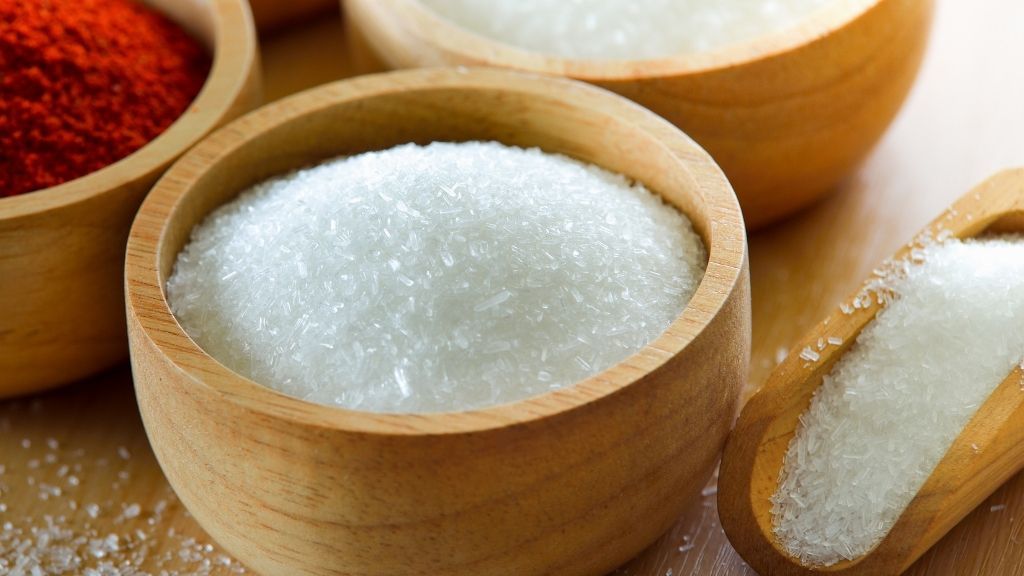Do you eat fresh vegetables and fruits every day, do you usually avoid red meat and sugar, do you often cook at home? Great! Sometimes, though, you eat a hamburger, you eat your pancakes with some extra sugar, and you grab a handful of your kid’s gummy worms? No problem. If you do it in moderation, it won’t hurt you, and this is also true to Monosodium Glutamate.
This article gives you an overview of what you should know about Monosodium Glutamate:
What is Monosodium Glutamate?
Monosodium Glutamate is a food additive, belonging to the group of flavour enhancers. It is also known as MSG or E621. It is the most used food additive. Some say it has a distinctive umami flavour, but that’s not what flavour enhancers are about. A common property of flavour enhancers is that they affect taste buds. So they don’t give extra flavour to the food but enhance their natural taste. This is why Monosodium Glutamate has been so popular among food manufacturers for so long.
Uses of Monosodium Glutamate
It is important to note that glutamate doesn’t only come from a test tube, it can also be found in our food in its natural form. Monosodium Glutamate can be found in dairy products, meat and seaweeds. Glutamic acid occurs in tomatoes, mushrooms, and even in our bodies, it can be found in breast milk. The food industry uses it mostly to enhance the salty flavours in foods. Stock cubes, cold cuts, marinated meats, salads, dressings, spices, chips, cheeses, tomato sauce and countless other foods contain it. Manufacturers often use it instead of salt, as in addition to the salty taste, it enhances the natural flavours of meat, cheese, potatoes etc. It is a basic “spice” in Asian cuisine, a salt substitute, used not only but food manufacturers but also at home and in restaurants.
The “Chinese restaurant syndrome”
The unwaning popularity of Monosodium Glutamate lasted until the late 1960s. There was a halt in 1968 after a doctor summarized his experiences with MSG in a medical paper. The article was about the fact that a patient experienced headaches and weakness every time he ate at a Chinese restaurant and blamed a large amount of Monosodium Glutamate in the food for the symptoms. Hence the name “Chinese restaurant syndrome”. The symptoms included chest tightness, headache, neck and back pain, weakness, flushing and allergy-like reactions that have been studied by many doctors since.
Most of them concluded that foods with high salt and fat content and the common allergens these restaurants use like peanuts and shrimp may be responsible for the symptoms. Nevertheless, Monosodium Glutamate has been the focus of attention ever since. Many blame MSG for a wide range of health problems, from migraines to various cardiovascular problems, and some even refer to it as a “neurotoxin”.
Are there any harmful effects?
Several studies have tried to prove or refute the claims that say Monosodium Glutamate has harmful effects. It is also a fact that Monosodium Glutamate is listed as one of the safe food additives. No food safety authority has put it on the list of banned additives. The same cannot be said for all additives. However, we cannot ignore the fact that there are people who are more sensitive to Monosodium Glutamate. Of course, we should pay attention to our daily intake of MSG. Experience has shown that it is not recommended to consume foods containing glutamine on an empty stomach.
Consuming natural foods and avoiding processed foods is always the best option. And if we know that our body is sensitive to a food or ingredient, be it milk, gluten or Monosodium Glutamate, we should avoid them for our own benefit. We can create a healthy diet if we pay attention to what we eat and practice moderation.


